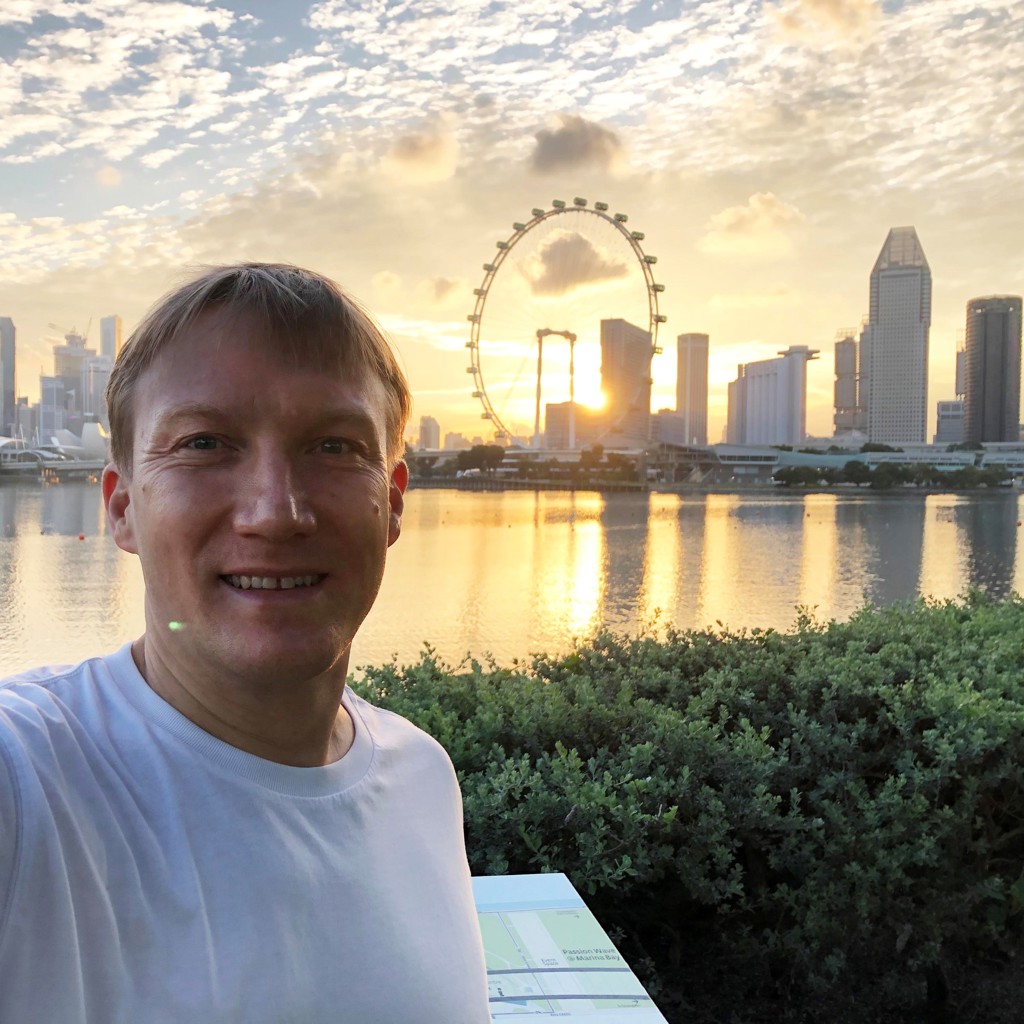Arseniy Kuznetsov
IMRE, A*STAR, SingaporeFor pioneering contributions to the field of dielectric nanoantennas and development of their applications.

Arseniy Kuznetsov is one of the pioneers in the field of dielectric nanoantennas. His first discovery of optical resonances in silicon nanoparticles was largely by surprise, but provided an opening into a completely new field. He remembers examining a silicon wafer ablated by a femtosecond laser under a dark-field optical microscope for a completely different purpose and observing bright colors, which indicated new resonances and led him down an entirely new path in his career. His curiosity and willingness to change the direction of his work are starting to have real technological applications now.
Not only is his work starting to have an impact, but the field of nanophotonics is moving in that direction as well. Over the last few decades, the area has been primarily focused on foundational research and ideas. Now, he says, is the time to move into applications. He comments, “[We] really need to think how [these concepts] can transition to technologies and how we can…benefit industry and people.” He shares that he has never been someone who thinks about history or biographies of famous scientists. Instead, he focuses on the current research and technology, and his favorite part of the job is discovery.
His first introduction to science was through his parents. His father was a scientist, and his mother an engineer, and they both worked at the same institution in Russia. His younger brother followed in their footsteps, but Arseniy knew he wanted his work to reach an international audience. Achieving this kind of visibility has been his biggest challenge to date. He comments, “It took me a while until I could get to work at the level where you become visible worldwide….people who graduate from top-ranked universities (e.g. MIT or Stanford) might have a faster career path than I had [due to the increased visibility granted by their institution].” Hard work, dedication, and the support of those around him are the keys to his success.
Progress was still slow at first. He pursued his PhD as part of a joint program where he spent half the year in Russia and half the year in France. These first glimpses into the international scientific community inspired him to keep working toward his goal. After he completed his PhD, he moved to Germany for his Humboldt Scholarship. His most significant and most recent international move was to Singapore in 2011 to join one of the institutes of the Agency for Science, Technology and Research (A*STAR), where over ten years he progressed from a regular scientist to a group leader and later to his current position of principal scientist and department head. These transitions allowed him to expand his network of colleagues and gain international recognition for his work.
As he reflects on his career, he has observed two essential qualities in successful scientists. First, they must be curious and love what they do. “If you think of having a career [in science] just to have a job and money, that is not enough motivation.” The other important quality is tenacity. Arseniy advises, “It takes a long time to find something that can really bring you success…in many situations, you try new things, and they don’t work, so you need to keep trying and not give up.” One final piece of advice he offers is to find and maintain a healthy “work-life” balance. He works every day to find a balance between his family life and career.
Photo Credit: Arseniy Kuznetsov
Profile written by Samantha Hornback
